Olympic Perspective: The Heights Of Hveger Never Seen & Other Careers Lost To War
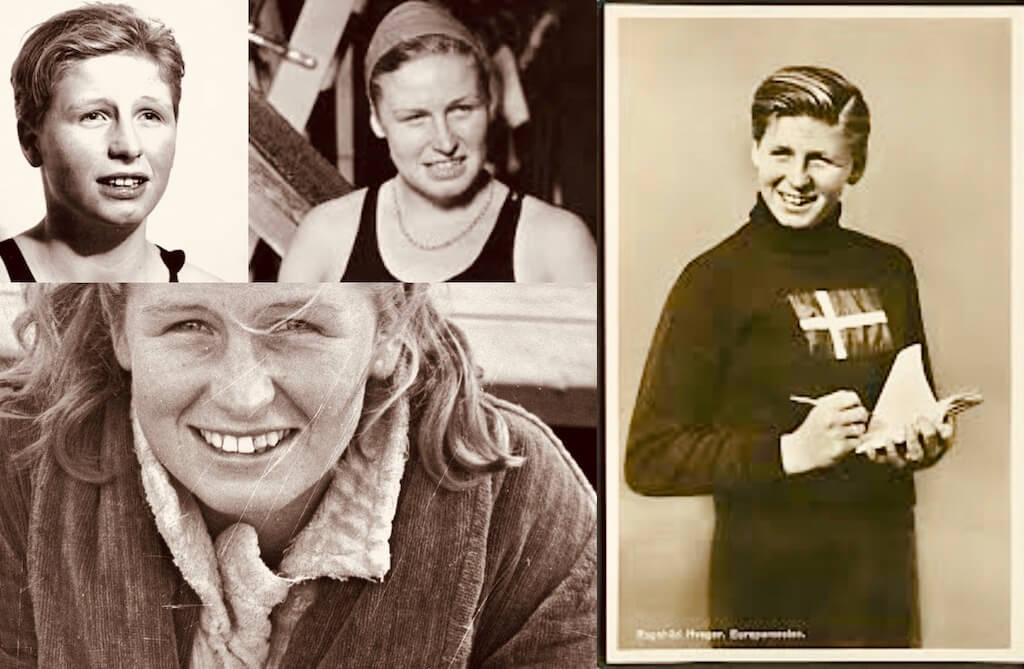
Olympic Perspective from the Past for the Present generation coming to terms with a shift from Tokyo 2020 to 2021 that offers hope not finality
This weekend, Swimming World is trawling back in history to find some of the stories of the past that contribute to our series in search of perspective for the present season of social-distancing, closures that stretch to pools, cancellations and postponements that have turned the sporting seascape and landscape into a desert.
- The Tokyo Postponement in Perspective: What Has (and Hasn’t) Stopped the Olympics
- Olympic Perspective: Alfred Nakache, The “Swimmer of Auschwitz” & What It Means To Overcome
Ragnhild Hveger: Denmark’s “Golden Torpedo”
One swimming career that was lost to the years of the Second World War WWII that followed on the heels of a Berlin 1936 Olympic Games showcase for Nazi rule stands above all others in the aquatics history file labelled “what might have been”: Ragnhild Hveger, of Nyborg, Denmark, was the greatest swimmer never to have won an Olympic title.
When Ragnhild Hveger won gold medals for Denmark in three of the five events at the 1938 European Swimming Championships at Wembley, a predecessor swimming correspondent of mine on The Times (London) named her the “Golden Torpedo”. Her links with the Nazis and lack of an Olympic gold would come to frame her legacy.
Between 1936 and 1942 she set 44 world records, won a silver in the 1936 Berlin Olympics aged 15, and in 1940, the year when occupying forces moved into Denmark, she was described by a newspaper for German troops as “the most successful sportswoman in the world”.
At 15, Hveger took a surprise silver over 400m freestyle at Berlin 1936 just 1.1sec behind Dutch distance ace Rie Mastenbroek. Among the global standards she set was a 2:21.7 in the 200m freestyle that would survive 20 years; from 1938 until the emergence of Dawn Fraser in 1956. Hveger broke the 400m record eight times and was first inside 11mins over 800m and first inside 21mins over 1,500m.
The month before the 1936 Olympic Games Hveger set the first of her world records, in 11:11.7 in the 800m freestyle. There being no 800m race in those days at the Games, the young Dane’s best chance came in the 400m. In the heats in Berlin, set a 5:28.0 Olympic record that took her 0.5sec inside the 1932 winning time of Helene Madison (USA).
On the day of the final, Hveger was given a box of chocolates by fans. She shared them with her fellow competitors but, several references and press cuttings from the time note, walked straight past Mastenbroek, the 1934 European champion.
Not a good move, as it turned out. In the final, Hveger took the race out hard, turning first in 34.0 and 1:15.0 at 50m and 100m respectively, with American Lenora Wingard (nee Kight), second by 0.1sec to Madison four years earlier, a touch behind and Mastenbroek on 1:15.6.
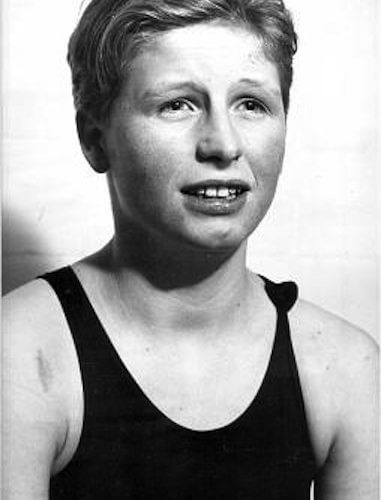
Ragnhild Hveger – Photo Courtesy: International Swimming Hall of Fame
By 200m, all three turned at 2:40.0, and by 300m, Hveger’s 4:05.9 left her 0.1sec ahead of her two rivals. Down the next length, the Dane edged ahead for the first time but out of the last turn, it was Mastenbroek who found extra reserves and sprinted past Hveger to take the title in an Olympic record of 5:26.4.
Between 1937 and 1940, Hveger lowered the 400m world record eight times, from 5:16.0 to 5:00.1. She was the greatest swimmer never to have won an Olympic title. Suspended by Denmark after WWII because she had taught swimming at a German naval college, Hveger was eventually reinstated but had retired in 1945 and a comeback in time for London 1948 was halted not by her lack of form but her politics, her links to Nazi Germany significant in Denmark’s decision to rule her own of contention at an Olympics that barred Germany and Japan as the aggressors him the Second World War.
However, by 1952 – with her 1940 400m world record still in place – Hveger had been accepted back into the fold and finished fifth over eight laps in Helsinki. She was 32. Her finest competitive tally was a three-gold-medal haul (100m, 400m and 4x100m freestyle) at the 1938 European Championships in London: her victory by 18.7sec in 5:09.0 over 400m set a championship record that would survive until 1958, while her 100m championship record in 1:06.2 would stand until 1954. She was a member of the two Danish 4x100m freestyle quartets that set two world records in 1938.
How Hveger’s Legacy Was Dented By Lack Of Olympic Gold
In a 2008 book on Danish wartime sporting relations with the Germans, Hans Bonde wrote:
“The importance of these women [the 1938 team] for Danish national sentiments showed itself clearly on their homecoming, when they were received at the Copenhagen city-hall square, on a hastily built rostrum, cheered by ‘a sea of people’ in what Idrætsbladet called ‘the greatest reception ever given to Danish sportsmen or women’ .”
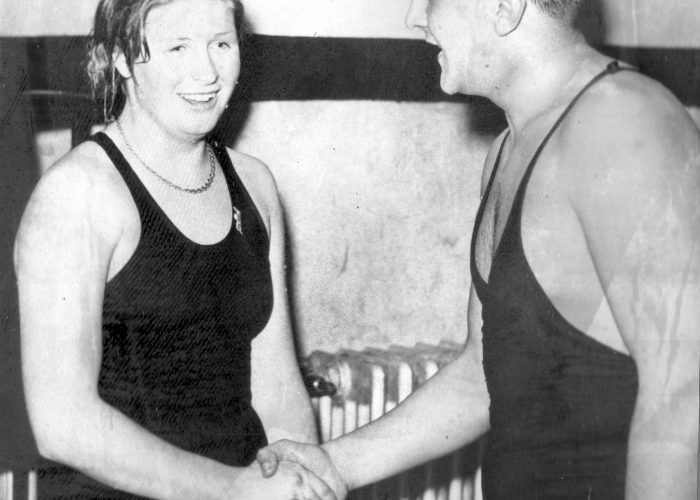
Ragnhild Hveger – Photo Courtesy: International Swimming Hall of Fame
Ten years later the public had turned against Hveger – and she would never find the global fame her swimming deserved. The lack of Olympic gold was key to that outcome.
Hveger was the only swimmer without one in Swimming World‘s top 10 of 20th-century swimmers. Hveger was denied not just by the timing of the Second World War, but by her close links to the Nazis.
Hveger was hugely popular in Denmark in the 1930s, and was successfully used by German propagandists in the war years despite the official Danish policy of non-cooperation in sport. She married a German, and moved to Germany in 1943 when the Danish resistance movement was growing. Both her parents were members of the Danish Nazi party, and one of her brothers fought in the Waffen SS on the Eastern Front. After the war her father and brother were both interned.
That history can clear consequence: when the first postwar Olympics came to London in 1948, Hveger was not selected for the Danish team.
Last 27, Hveger was denied what would have been her last realistic chance of Olympic gold. Had she taken part she would have left her blocks as World record holder in the 400m and a contender for the title in two other events.
As Preben Kristensen, of the Danish Olympic Committee, told The Times: “There was public resistance to her in 1948. She was training and swimming very well, she was definitely good enough. Certainly she was the best swimmer never to win a gold medal.”
That was the closest she got after her Berlin 1936 debut: “good enough” to have won at London 1948, the first Games at which swimming was held in an indoor pool.
How Politics Played A Part in Hveger’s Swim History
Hveger had been supportive of the Germans, who were well aware of the importance of sporting heroes. In 1940 they executed Janusz Kusocinski, a Polish athlete and resistance fighter, who had won Olympic gold at 10,000 metres in 1932. Having the Hvegers on side was a propaganda coup.
In his book, Bonde recounts an interview with Hveger in a German magazine, after one of her many visits to swim in Berlin.
“Under the headline Ragnhild and the War, ‘the Danish world champion’ described how she ‘with an open mind and with great personal involvement, follows the course of the war’. She is ‘constantly in communication by letter with her German fellow sports friends who today bear the honoured grey uniform, fighting for Germany’s freedom’.”
Hveger lived and trained and coached German soldiers in Germany. She also refused lucrative offers to race in the United States, a matter also picked up and propagandised by the Hitler News, the Nazi Party’s Völkischer Beobachter:
“There have been many offers from ‘dollar-country’ made to the young Danish girl, but she held firm, and the more tempting the American sums became, the stronger she became in her resistance.”
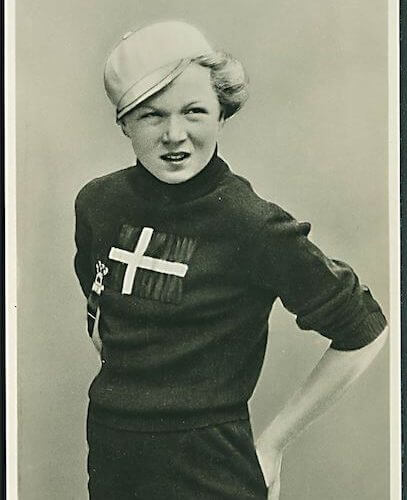
Inge Soerensen – Photo Courtesy: Danish Stamp Collection
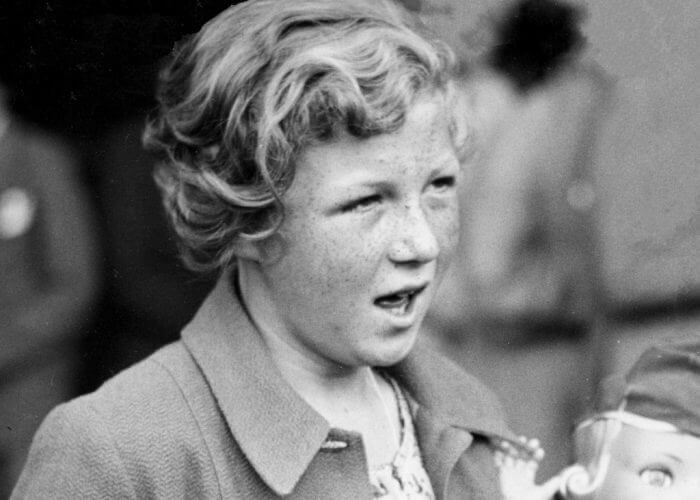
Inge Soerensen – Photo Courtesy: Wikipedia
Hveger’s standing stood in stark contrast to that of another popular Danish swimmer, Inge Sørensen. Known as “Little Captivating Inge”, after that phrase was used in a radio commentary, Sørensen remains the youngest ever winner of an Olympic swimming medal.
She was 12 when she won a bronze in Berlin in 1936, and was welcomed home by a crowd of 30,000.
She declined to offer a Nazi salute on the podium, and refused to compete in Germany during the occupation. She moved to the United States in 1951, and passed away in the same year as Hveger, 2011.
Hveger coached in Kiel. When she accepted that job in Germany, a Danish magazine published in London in 1943 ran a commentary that said Hveger had become “very unpopular in Denmark because of her Nazi friends”.
That unpopularity survived WWII, though time would heal the rifts
By the time Helsinki 1952 had come round and both Germany and Japan had been allowed back into the Olympic fold, Hveger had been forgiven, at least by officialdom, in Denmark. Fifth place over 400m freestyle at 32 years of age: a result that remains one of the most impressive by a thirty something in Olympic history.
Hveger retired from swimming in 1954 and withdrew from public life. Despite her behaviour in the war years, she was named Denmark’s female athlete of the century in 1996.
Ragnhild Hveger, swimmer, born on December 10, 1920, died on December 1, 2011, aged 90.
Other Swimming Greats Who Lost Their Best Years To War
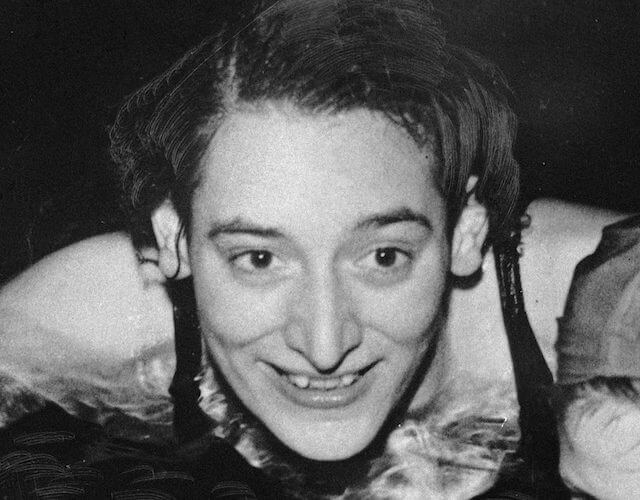
Cornelia Kint of The Netherlands in 1938 – Photo Courtesy: Wikipedia
Others affected by the war years included Cornelia Kint and Iet van Feggelen (NED), who set nine backstroke world records between them in 1938 and 1939, respectively taking gold and silver medals over 100m at the 1938 European championships. Neither figure in Olympic history.
Kint’s name graced the starts lists of the 100m backstroke at the 1948, 1952 and 1956 Olympic Games as World record holder on 1:10.9. Kint held that standard between September 22, 1939 (Bilbo Baggin’s birthday) and December 5, 1956, when Britain’s Judy Grinham clocked 1:12.9 for Olympic gold in Melbourne, the time registered as the new world record under international rules that kicked in for 1956 and only recognised long-course (50m pool) efforts for world-record ratification.
Over 1,500m, Tomikatsu Amano (JPN) became the first man to swim inside 18mins over 1,500m freestyle in Tokyo in August 1938, two years before his country signed a Tripartite Pact with Nazi Germany and Mussolini’s Italy. Amano was never seen in international competition.
On breaststroke, Joachim Balke (FRA) established a world record over 100m in 1938 and in the same year claimed the 200 European title, while Alfred “Artem” Nakache (FRA) broke the world 200m record in 1941 but in 1943 was arrested by the Gestapo as a Jew and taken to a concentration camp. His wife and daughter died there, while Nakache raced at the 1948 Games: no longer the man he once was, he was eliminated in the semis. The story of Nakache will be told in another file this weekend.
The most outstanding case of holding on for better times is that of William Smith (USA), who in 1941 set a world record of 4:38.5 over 440 yards freestyle record and went on to win the 1948 Olympic title (4:41.0, Olympic record).
On March 18, 1944, Alan Ford (USA) became the first man to race inside 50sec over 100 yards freestyle and three weeks later, on April 13, became the fist under 56sec over 100m freestyle (55.9). In 1948 he claimed the silver medal.
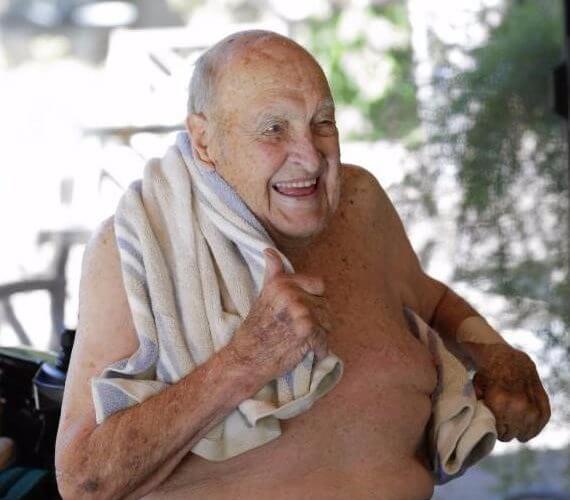
Adolf Kiefer – Photo Courtesy: International Swimming Hall of Fame
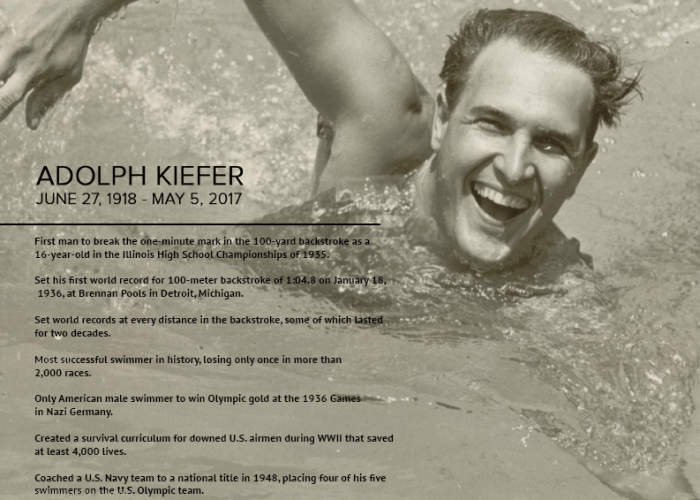 Adolf Keifer (USA), the 1936 Olympic backstroke champion set two world records over 200m between 1941 and 1944, while his 100m world record lasted from 1936 until 1948 and his Olympic record from Berlin survived until Helsinki, 1952.
Adolf Keifer (USA), the 1936 Olympic backstroke champion set two world records over 200m between 1941 and 1944, while his 100m world record lasted from 1936 until 1948 and his Olympic record from Berlin survived until Helsinki, 1952.
Including yard performances, Keifer, who introduced the Nylon suit to the Olympic Games as supplier to the 1948 USA team, established 17 backstroke world records between 1935 and 1944. He would have been a title contender at what would have been the 1940 and 1944 Games but spent those years in military service.
Commissioned to pen the swimming teaching manual for the US Navy after he noted that more lives were lost through drowning than through enemy fire, Keifer had met the infamous bearer of his Christian name in Berlin 1936. He would later say:
“If I knew then what I know today I would have thrown him in the pool!”
Our Olympic Perspective coverage includes:
- The Tokyo Postponement in Perspective: What Has (and Hasn’t) Stopped the Olympics
- Can’t Swim? Here Are 25 Things You CAN Do To Stay In The Zone & Get Fighting Fit
- No Fear! Clark Kent Is Washing Hands, Dishes & Keeping Fit To Fight The Bug & Beyond
- Jacco Verhaeren’s Message To The Australian Dolphins: “Give Yourself Time And Space.”
- Michael Gross Issues Albatross Warning To Bach: Save Olympic Dreams With Tokyo 2021
- Mel Marshall: Safety Of The Athletes & The Nation Is Paramount In Global Tragedy
- Bravo! To The Tokyo 2021 Advocates As Swim Leaders Navigate A Big Bend In The River
- ISL Boss Grigorishin: Health & Safety Paramount +2020-21 Season To Respect Any Tokyo Change
- Swimming Canada ‘very much aligned’ with USA Swimming on Olympic postponement
- USA Swimming Calls For Olympic Postponement In Face Of USOPC Indecision
- Jacob Pebley to USA Swimming: “Only Moral Option” is Postponing Trials, Olympics
- French Swimming Boss & Pharmacist On The Frontline of Coronavirus War Denounces IOC & Tokyo 2020 Inaction As “Indecent & Shocking”
- Ranomi Kromowidjojo Hails Healthcare Heroes & Urges Fans To Fight Coronavirus With Strict Hygiene Protocol
- Italian Struggle To Find Swimming Pools To Train In Sparks #stopolympics Coronavirus Lockdown Campaign




Great article
On a note, in 2011 she was votes danish female athlete of the 20th century.
Thanks Kim. Appreciated. I have a reference that it was 1996… “Hveger retired from swimming in 1954 and withdrew from public life. Despite her behaviour in the war years, she was named Denmark’s female athlete of the century in 1996.” Will look back to find the source of that when I get the chance.
I have her autograph